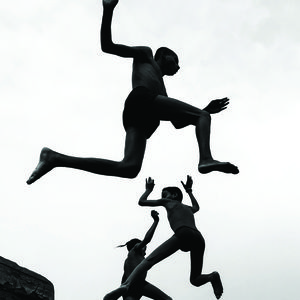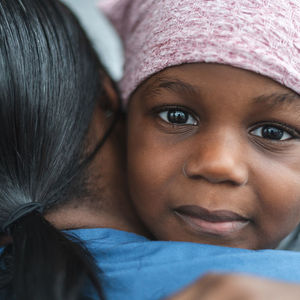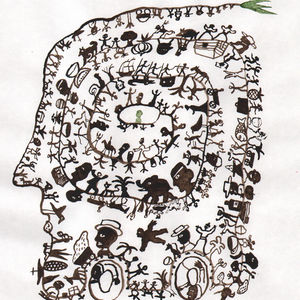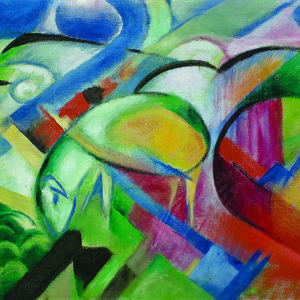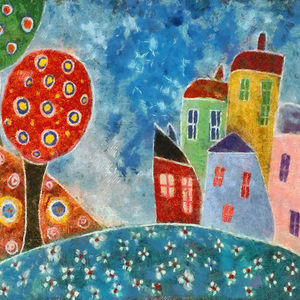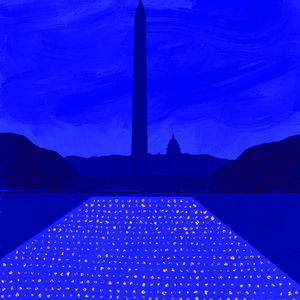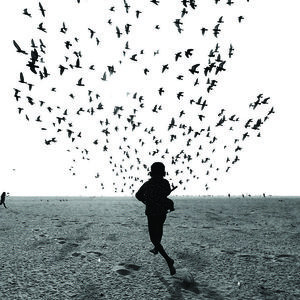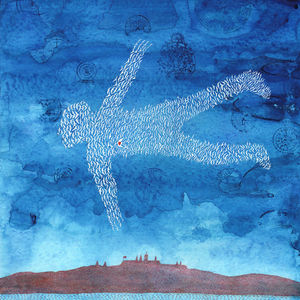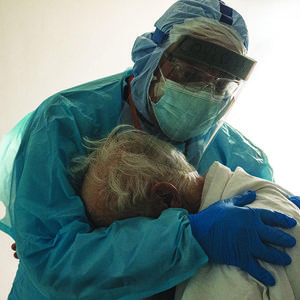- Doing Good
- Goodness Gracious
- Pain Relievers
- Call It Human Nature
- Storylines
- The Sickness Swing
- The Sound of Sublime
- Moving Pictures
- Body Language
- A Quiet Incarnation
- Giving Upward
- Dauntless Luminescence
- The Shining Joy of Falling Flat on Your Face
I.
We go off map here. Enter gently, this alcove of ancient stillness. A small island of memory at the end of a two-rut trail.
Watch while my uncle straightens his bad leg. A nudge with his hand, a gesture I have come to recognize. Like animal sign, unspoken. Like the way he points now with the bill of his hat.
Together, we breathe in Gaa-waabaabinganikaag, this white clay land. Scan the wooden grave houses, their shapes melting back into earth.
When we bend to lift the fallen fence rails onto the hand-wrought bucks, the action speaks for us. “All this,” it says into the jack pine. We nod then, agreeing with the quiet, acknowledge the eloquence of the afternoon’s slanting light. From the chamois bag, we take asseema, place it carefully on the small shelves of the spirit houses — tobacco offering, too, a heard silence.
Moss climbs imperceptibly in the deep woods as, year by year, roofs bow more deeply, as we do.
II.
Mino-bimaadiziwin.
In Anishinaabemowin, the word invokes a way of being in the world. The good life, good path. When language is alive, when we feed language and story, each word both names and instructs. Nouns become verbs. We live a concept like goodness.
In classes, I steer writing students away from abstractions toward embodiment. How do we know pandemic things like fear or loneliness? What actions equal bigotry or racism? Or, better, how do we know the ways of goodness?
In the Ojibwe language, mino is only a prefix, waiting to be attached to action. Sometimes called a “preverb,” alone it isn’t a word. Only in verbing, in action, can goodness be spoken. Minwaadodan, to tell good news.
III.
We gather on a Saturday morning in the city, the Riverwest neighborhood of Milwaukee. Mino-giizhigad — it is a good day. Here on a small building on North Holton Street, local artists have collaborated to create a memorial to George Floyd. The brightly colored mural proclaims, “We Mourn, We Organize.” Here, in blue, larger than life, the image of Dontre Hamilton also looks back from a land of the exiled.
We have come in solidarity with Black Lives Matter. A handful of jingle dress dancers, hand drummers, singers, members of the Native community. Niminokonayemin — we dress well. The Jingle Dress, Zaangwewemagooday, is a medicine dress; the dance, a prayer for healing — a goodness we enact with the strength of our bodies.
In addition to regalia, we wear masks. I have embroidered mine to hint of floral beadwork. Ningii-minogwaazh, I worked to sew it well. In this, the goodness multiplies across the process as I remember (nimikwendam) my mother teaching me embroidery as a child, recall the beauty of her handiwork, embrace the symbolism of the woodland florals. With intention, I select the copper. Minwaande — it is a good color, reminding me of Anishinaabe teachings and the palette of fall, dagwaagin.
We dance then in memory of those lost, in hope for a healing in our country — from the COVID pandemic and the malady of racism. Each step a prayer.
IV.
At the grave houses, we make offerings; at the memorial, we do the same. These actions are not separate, they are part of a process, the way we build a good pathway, learn to live mino-bimaadiziwin.
Kimberly Blaeser, former Wisconsin poet laureate, is a professor at the University of Wisconsin-Milwaukee, an MFA faculty member at the Institute of American Indian Art and founding director of In-Na-Po — Indigenous Nations Poets. She is author most recently of Résister en dansant/Ikwe-niimi: Dancing Resistance.
